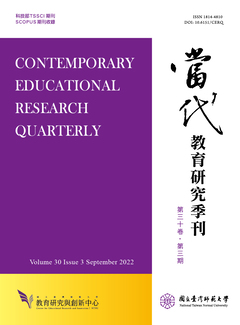

研究目的
本研究旨在運用心理學者有關道德楷模的研究結果,以及 A. M. Flescher 與 B. Williams 的觀點,評論 J. O. Urmson 針對道德聖人與道 德英雄「故做謙虛」評斷的適當性,再據以提出對我國品德教育的 蘊義。
研究設計/方法/取徑
本文採用文獻分析與理論分析,綜整道德楷模的重要說法,據以檢證 Urmson「故做謙虛」評論的適當性。
研究發現或結論
研究發現道德楷模的道德心理有兩大特點:一是感到「非做不 可,不做會良心不安」,此即 Williams「實踐必要性」與「道德不 能」捕捉的心理現象。二是經常表示「我還可以做且應做得更多」。W. Damon 與 A. Colby 解釋,這與他們對於道德理想的高度認同感, 繼而感到強烈的個人責任感有關,道德承諾與作為因應而生。據此,本文主張道德英雄/聖人是真心相信自己「有義務」要做他所做的 行為,而非如 Urmson 所言是「故做謙虛」─「假裝」低估自己所為 的價值,將明知的超義務行為講成是義務。筆者借用 Flescher「三類 義務」的分析指出,隨著個人變得愈是有德,其主觀義務感將逐步 提升,此即「義務與德行的共變」。道德楷模非但不是「故做謙虛」, 反而愈清楚自己是「比『上』(道德理想)不足」。其感於自己仍 舊未臻理想,因此「還可以做且應做得更多」,此即 L. L. Fuller 所 稱「抱負性道德」的特點。
研究原創性/價值
本研究價值有二:一方面闡明道德楷模主觀的道德心理,揭示 其道德義務感實與德行發展呈現共變關係,以此駁斥 Urmson「故做 謙虛」的評斷。另一方面闡明「抱負性道德」充分顯現在道德主體 對於道德理想的高度認同感,感於自己比「上」不足,驅使其持續 致力於理想的追求。
教育政策建議或實務意涵
這對品德教育的啟示包括:一、學生品德發展軌跡與現下狀態 的掌握,有賴親師生三方合作,尤其是學生持續的自我省察。二、 鑑於道德認同係一發展歷程,將「品德核心價值」納為跨教育階段 共通的學習主題是於理有據的。惟需指明不同教育階段的任務究屬 「局部德行」的陶養,抑或「將局部德行轉變成全面德行」。三、 為提升個人的道德認同感,道德楷模的生動敘事,將有助於激發受 教者省察自己「與善的距離」以及「有為者亦若是」的意念。
Purpose
This paper draws on psychological research findings regarding moral exemplars and the related notions of A. M. Flescher and B. Williams to investigate the adequacy of J. O. Urmson’s “false modesty” comment on moral saints and heroes. Some crucial implications for character and moral education are discovered.
Design/methodology/approach
Documentary and theoretical analysis are used to distill certain critical perspectives of moral exemplars with the aim of scrutinizing the adequacy of Urmson’s “false modesty” comment.
Findings/results
Moral exemplars’ psychology is discovered to be characterized by two features. First, these moral exemplars frequently state “I have to do this or I would feel uneasy.” This is well captured by a pair of concepts from Williams: practical necessity and moral incapacity. Second, they often remark “I could do more and I should (have) do(ne) more.” According to W. Damon and A. Colby, this statementrelates to their strong identification with their moral ideals, resultingin a strongly felt personal responsibility and subsequent moral commitment and actions. In sum, the author contends that moral saints and heroes sincerely feel obliged to do what they have done. This is in contradistinction to Urmson’s “false modesty” comment—namely, that they “pretend” to have a low opinion of their accomplishments. Moral exemplars’ subjective sense of duty is starkly different from that of ordinary people. Drawing on Flescher’s analysis of “three sorts of ought and three kinds of duty,” the author concludes that as an individual matures morally and becomes more virtuous, his or her subjective sense of duty accordingly expands and strengthens. A judged-to-be supererogatory action is then extremely likely to become an action that he or she now feels obliged to perform. This is termed the “covariance of duty with virtue.” At this point, such people are by no means being falsely modest. Quite the contrary, their true modesty comes from their clear awareness that they still fall (far) short of the moral ideal. Additionally, they genuinely feel “I could and I must do more” to attempt to approximate the ideal. This favorably characterizes “the morality of aspiration” in L. L. Fuller’s term.
Originality/value
The originality of this paper is its attempt to bridge the conversation among speculative philosophers and empirical psychologists on morality. The contributions may be illustrated in two respects. First, an investigation into moral exemplars’ subjective moral psychology reveals that an individual’s subjective sense of duty covaries with his state of virtue. This idea is employed to refute Urmson’s “false modesty” comment. Second, the morality of aspiration is illustrated interms of the moral agent’s strong identification with the moral ideal,which in turn motivates him or her to be committed to the continuous pursuit of the ideal and accordingly the feeling of falling short of said ideal.
Implications for Policy/Practice
Three major educational implications can be drawn from this investigation. First, it is incumbent upon the partnership among the parent, teacher, and student to have good knowledge of the developmental trajectory and status of the student’s moral character. In particular, the student’s faithfulness manifest in constantly facing up to his or her real state of moral character is especially critical. Second, given that the shaping of moral identity is a developmental process, the core values of moral character can be reasonably taken to be common learning topics across the various educational stages. However, it must be stressed that educational tasks are different for differing stages. Whether the task in question achieves the inculcation of local virtues or conversion of local virtues to more global ones mustbe specified. Third, the storytelling of the lively and rich narratives of moral exemplars helps enhance the student’s moral identification withthe manifested moral values. In doing so, the students are providedan opportunity to faithfully reflect on their own character, confronting their distance from the moral, and are subsequently motivated to emulate the moral exemplars.

This work is licensed under a Creative Commons Attribution-NonCommercial 3.0 Taiwan License.
Center for Educational Research and Innovation, National Tawain Normal University
162, Ho-Ping East Rd, Sec. 1, Taipei, Taiwan | Tel:+886-2-7749-3670 | E-mail: cerecerq@gmail.com
CERI | NTNU | E-mail Alerts | Open Journal System
© 2014 CERI-NTNU
